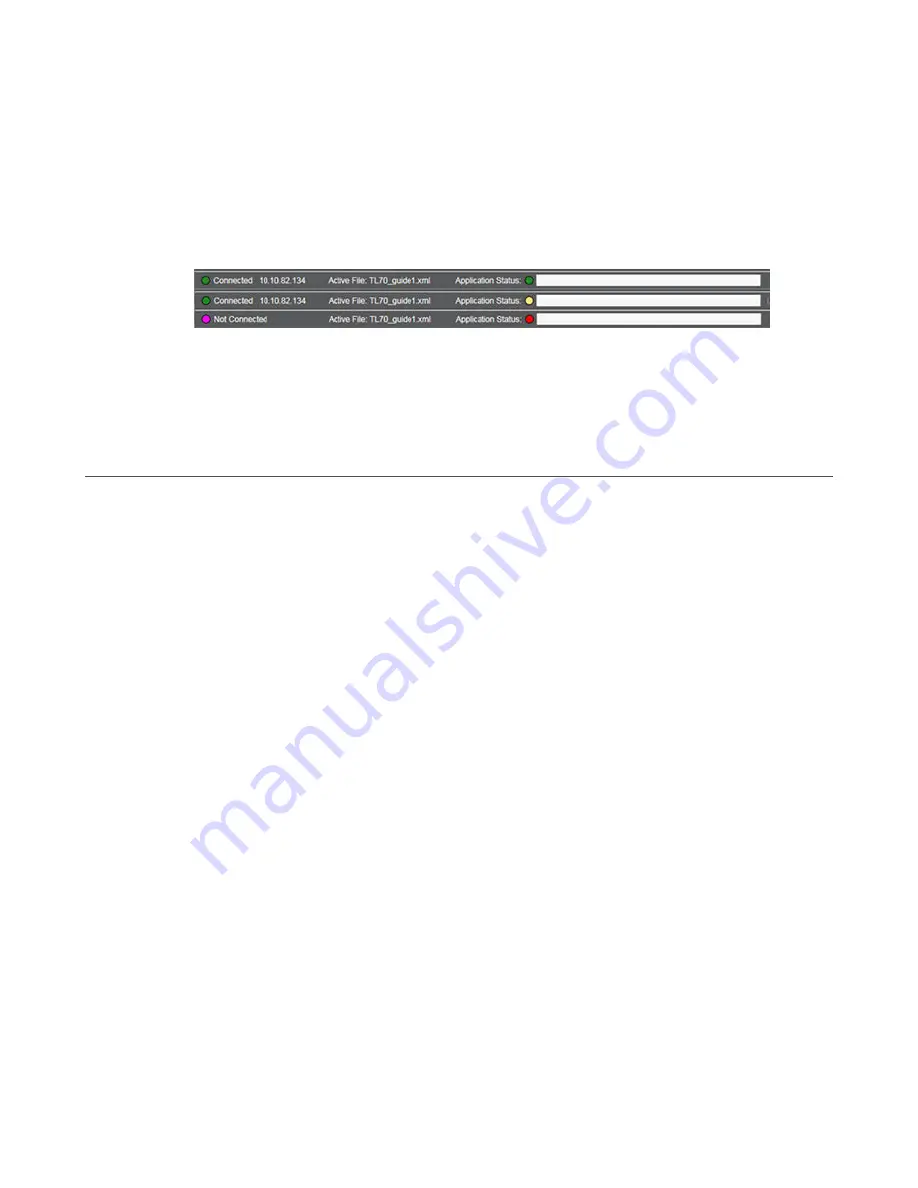
4.2.2 Save and Upload the Configuration File
After making any changes to the configuration, you must save the configuration files to your computer, then upload it to the
device.
Changes to the XML file are not automatically saved. Save your configuration file before exiting the tool and before sending
the XML file to the device to avoid losing data. If you select
DXM
>
Send XML Configuration to DXM
before saving the
configuration file, the software will prompt you to choose between saving the file or continuing without saving the file.
1. Save the XML configuration file to your hard drive by going to the
File
>
Save As
menu.
2. Go to the
DXM
>
Send XML Configuration to DXM
menu.
Figure 11. Status indicator bar
•
If the Application Status indicator is red, close and restart the DXM Configuration Tool, unplug and re-plug in the
cable and reconnect the DXM to the software.
•
If the Application Status indicator is green, the file upload is complete.
•
If the Application Status indicator is yellow, the file transfer is in progress.
The device reboots and begins running the new configuration.
4.3 DXM100-A2 Models Only
4.3.1 Binding and Conducting a Site Survey with the ISM Radio
Before the ISM radio can communicate, the ISM radio within the DXM must be bound to the other radios in the wireless
network.
Use the DXM LCD menu to bind external radios to the internal ISM radio.
If you are having difficulty running binding or site surveys, it may be because of the speed of the XML configuration file or
script running on the DXM. To resolve this issue, try one of the following options:
•
Disable the XML and script by setting DIP switch 4 on the processor board to ON and cycling the power to the DXM.
After binding the devices, turn DIP switch 4 back OFF and cycle power again to return to normal operation of the XML
and script.
•
Adjust the XML or script to slow down the RTU read or write rules.
•
Upload a blank XML, bind all devices, then upload the configured XML file.
4.3.2 Bind a DX80 Node to a DXM and Assign the Node Address
Binding Nodes to a Gateway ensures the Nodes only exchange data with the Gateway they are bound to. After a Gateway
enters binding mode, the Gateway automatically generates and transmits a unique extended addressing (XADR), or binding,
code to all Nodes within range that are also in binding mode. The extended addressing (binding) code defines the network,
and all radios within a network must use the same code.
1. Apply power to all the devices.
Separate radios by two meters when running the binding procedure. Put only one DXM Gateway into binding mode at
a time to prevent binding to the wrong Gateway.
2. Enter binding mode on the DXM radio:
a) Use the arrow keys to select the
ISM Radio
menu on the LCD and press
ENTER
.
b) Highlight the
Binding
menu and press
ENTER
.
3. Assign the Node address to the Node.
•
For Nodes without rotary dials: Use the DXM arrow keys to select the Node address to assign to the DX80 Node
about to enter binding mode. The DXM assigns this Node address to the next Node that enters binding mode.
Only bind one Node at a time.
•
For Nodes with rotary dials: Use the Node's rotary dials to assign a valid decimal Node Address (between 01 and
47). The left rotary dial represents the tens digit (0 through 4) and the right dial represents the ones digit (0
through 9) of the Node Address. You can leave the DXM "Bind to" address set to 1 because the Node's rotary
dials will override that setting.
4. Start binding mode on the DXM radio by pressing
ENTER
on the DXM radio.
5. Enter binding mode on the DX80 Node.
•
For housed radios, triple-click button 2.
DXM Enclosure Kit (DEK) Series
www.bannerengineering.com - Tel: + 1 888 373 6767
13






















